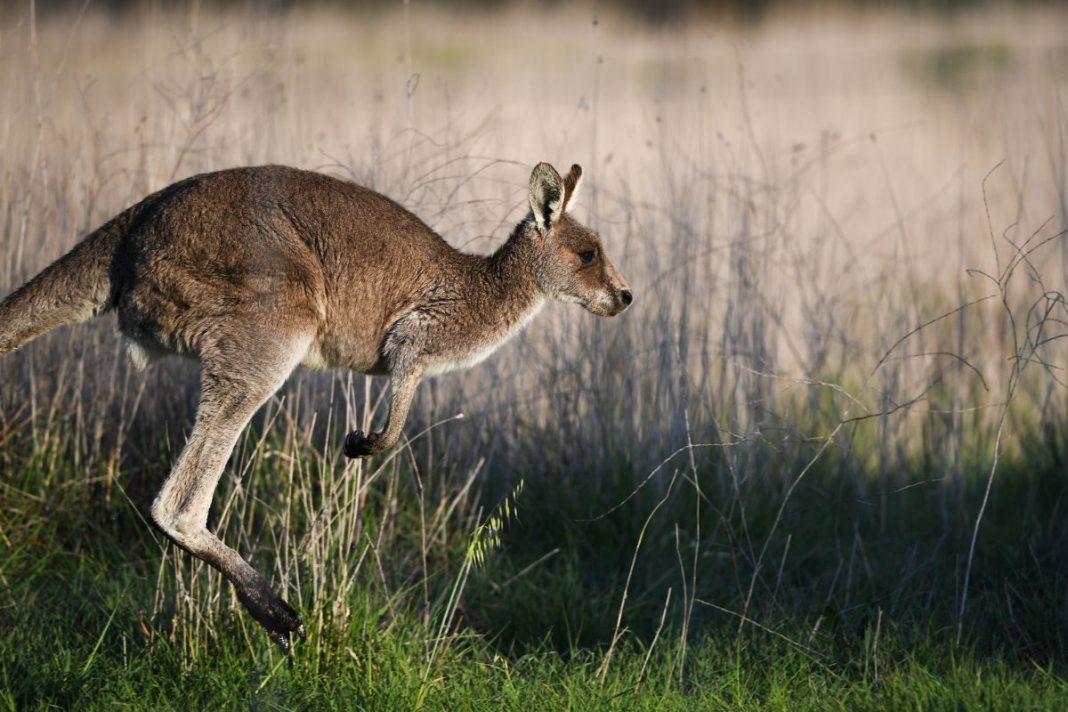Reducing the carbon footprint of livestock is a major challenge for Australian producers, but eating kangaroos might be a home-grown solution, according to an expert from the Australian National University (ANU).
Methane produced by beef cattle and sheep makes up 9 per cent of Australia’s greenhouse gas emissions. While the country’s red meat industry aims to be carbon neutral by 2030, reducing the amount of methane the animals produce has proven difficult, meaning the industry would have to rely on offsets.
But there may be a better option, according to Honorary Professor George Wilson from the ANU Fenner School of Environment and Society.
Farmers can reduce their emissions and make their grazing land more productive by using kangaroos as a red-meat alternative and by not increasing the number of beef cattle and sheep on farmland, he and co-author Dr Melanie Edwards suggest in a new report.
“Beef cattle produce 12 times more methane than kangaroos per kilo of meat, so they have a much bigger impact on the environment,” Professor Wilson said.
The authors call for a trial of an integrated kangaroo grazing system, whereby livestock producers would manage kangaroo populations alongside and in balance with their livestock.
“Farmers currently get no return from the 30 million-plus kangaroos that are currently on their properties,” Professor Wilson said.
“Existing kangaroo management practices such as roo culling are extremely wasteful, but shouldn’t be.
“Our novel grazing system would prevent several million kilograms of meat and skins from being left in paddocks and going to waste, at a time when a growing global population needs sources of protein.
“This system would create value for landholders while helping them to reduce the greenhouse impact of their livestock, control roo numbers, and improve their grazing impact.”
The improved grazing practices would improve vegetation growth, the authors argue, so the soil would store more carbon dioxide and could lead to producers earning carbon credits.
“Although no approved Australian emission reduction fund methodologies pay for a direct reduction in methane without producing the same amount of beef, emissions credits can be earned on international markets,” Professor Wilson said.
Low prices for kangaroo carcasses and carbon credits are an impediment to producers getting a stronger return from this scheme, but branding and marketing can increase the value of this native species.
One way to do this is to provide more information to consumers about what they’re eating, Professor Wilson said.
“In recent years, consumers have become more discerning about the provenance of the ingredients that end up on their dinner plates. Although the kangaroo industry has been trying, it hasn’t kept up.
“Currently, there is limited information available about the age, sex or species of the kangaroo being sold in supermarkets. Providing that detail would help consumers be confident about the quality of the meat they’re buying, and increase demand.”
It’s not only about methane emissions and waste reduction, the authors argue. Millions of kangaroos die during drought, and their populations should be appropriately managed to prevent mass starvations. The report endorses preparation of a National Kangaroo Strategy that would set out clear goals for kangaroo populations.
“Under current arrangements, we don’t even know if we want more or fewer kangaroos,” Professor Wilson said. “Most likely it will vary under our changing climatic conditions.
“A national strategy should examine stakeholder roles as well as societal expectations to provide greater certainty to industry, landholders, and wildlife managers.”
This research is part of AgriFutures Australia’s Carbon Initiative Program, a $2 million investment across 15 projects to explore novel approaches to carbon storage, greenhouse gas emission reduction, and emission avoidance.
The full report is available on the AgriFutures website.



